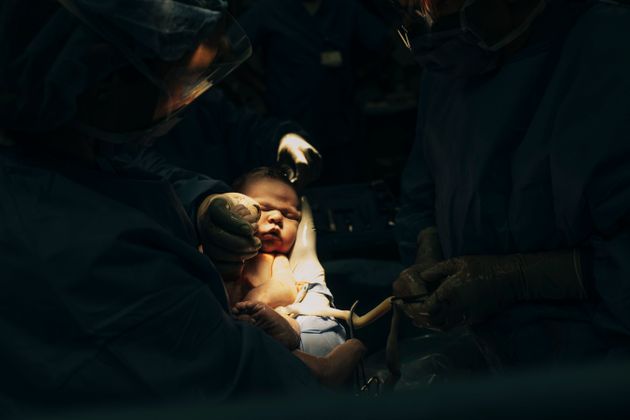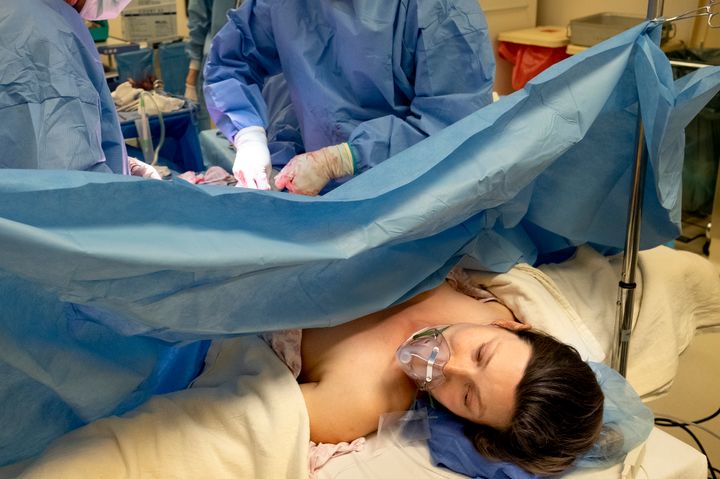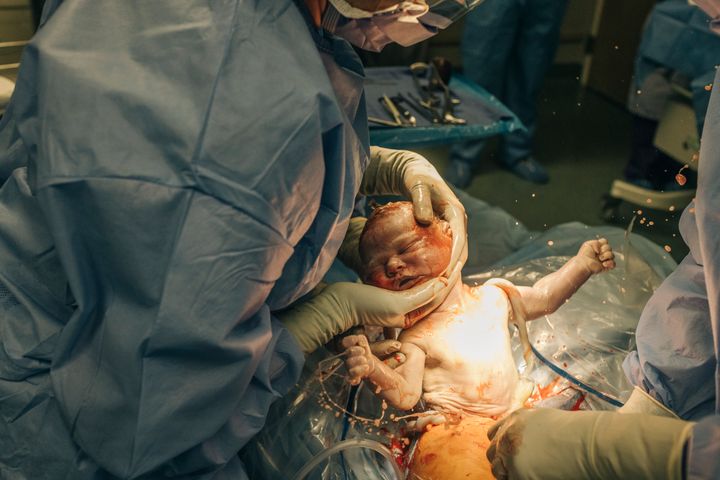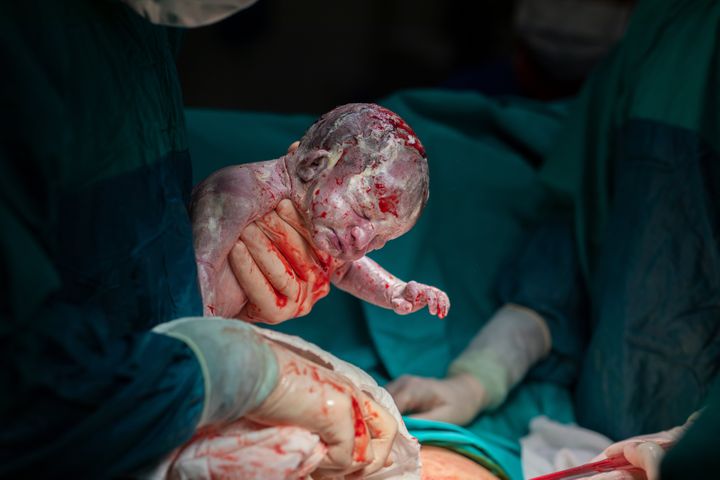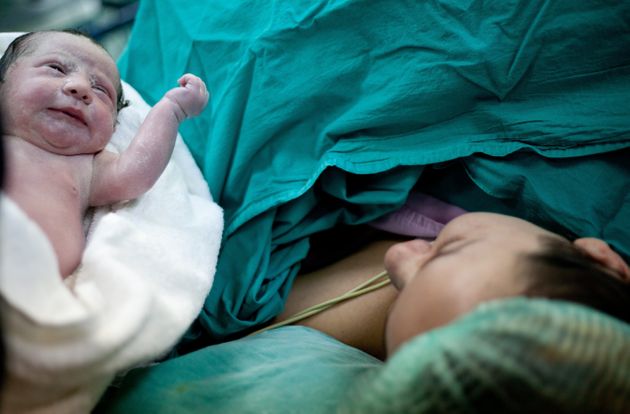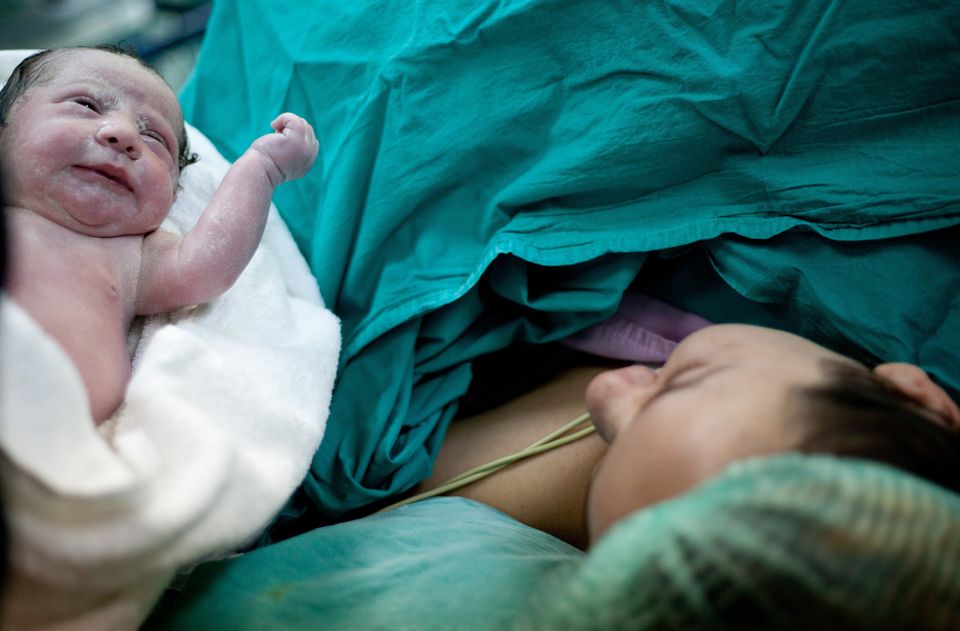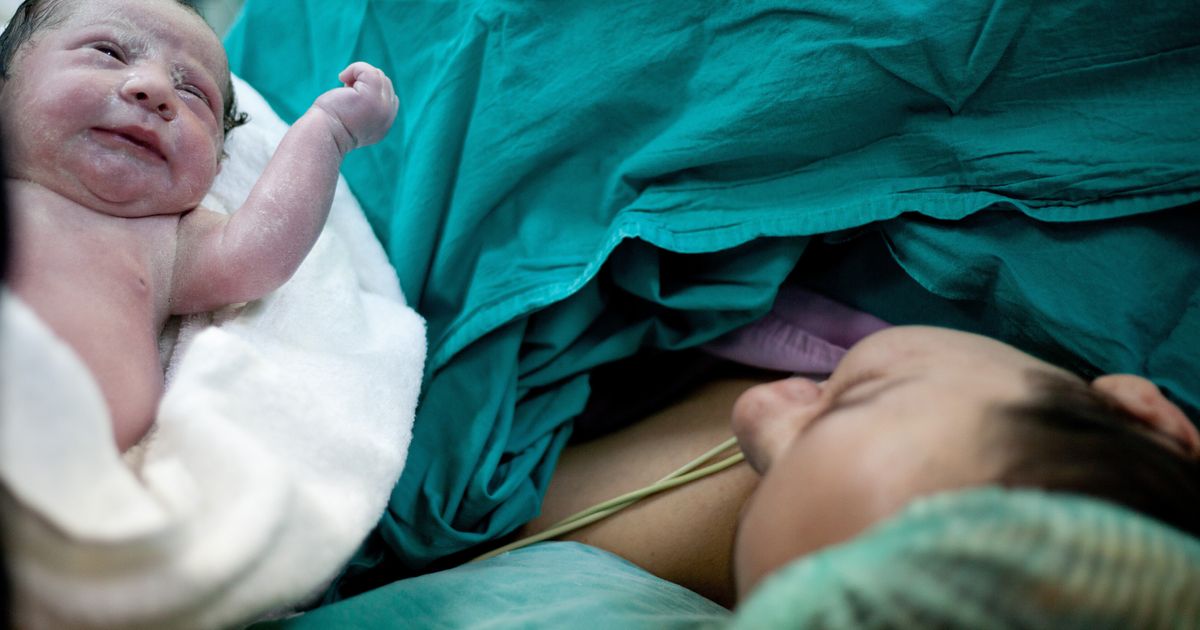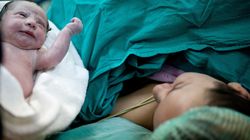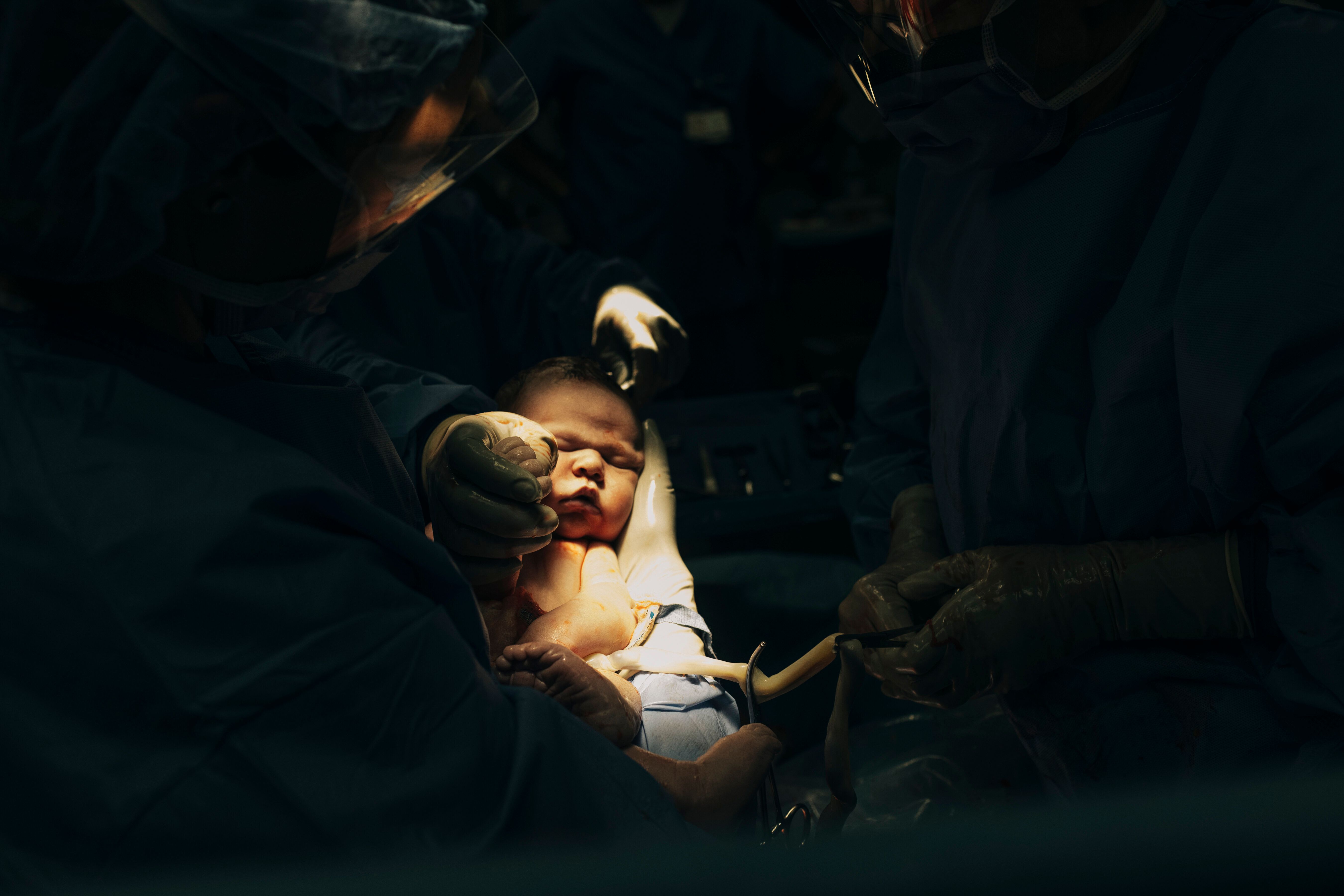
Swabbing newborn babies with their mum’s vaginal bacteria might boost their early development, according to new research.
Known as vaginal seeding, the process involves transferring vaginal bacteria to a baby after a caesarean section, with a view to improving their gut bacteria.
Advertisement
The process reportedly originated in Australia, however over the years has become increasingly popular in the UK, too – with more and more mums asking for vaginal seeding after a C-section birth.
But there are risks attached – specifically the risk of passing on an infection from mother to child.
What is vaginal seeding all about then?
Previous research has found babies born by C-section tend to have different gut bacteria to those born vaginally.
Vaginally born babies receive their early gut bacteria from the mother’s birth canal, while C-section babies’ microbiota are dominated by bacteria found on the mums’ skin, in breastmilk and in the environment.
Advertisement
While the difference tends to disappear as they age, researchers suggest early gut microbiota is associated with the development of baby’s immune system and could affect their disease risk later in life.
This has led to practices like vaginal seeding – basically, mums (or dads) would rub newborns with a gauze swab containing their mother’s vaginal fluids after birth via C-section.
But there is limited clinical evidence that vaginal seeding is safe and effective.
What are the risks of vaginal seeding?
Doctors have previously warned that the process could put babies at risk of infection – particularly from group B strep (GBS), which can prove deadly in some cases. And according to Jane Plumb, chief executive of Group B Strep Support, testing for group B strep “is rarely available in the NHS”.
“[GBS] is carried by around one in four pregnant women, and although it poses no risk to the mother it can cause fatal infections in babies,” Dr Aubrey Cunnington, a clinical senior lecturer from Imperial College London, wrote in the BMJ.
“There are also other conditions that cause no symptoms in the mother, such as chlamydia, gonorrhoea and herpes simplex virus, that could be transferred on the swab.”
Advertisement
He spoke about how one colleague had to intervene when a mother with genital herpes, who had undergone a C-section and was about to undertake the process.
“Swabbing would have potentially transferred the herpes virus to the baby,” said Dr Cunnington.
What does the new study say?
Researchers rubbed the lips, skin and hands of 32 newborns delivered via C-section with a gauze soaked with their mothers’ vaginal fluids and another 36 newborns with a gauze soaked with saline as blind controls.
Because of the risks attached, the mothers were tested in advance to make sure they were free of infections, such as sexually transmitted diseases and group B strep.
The team found that newborns who received the microbiota had more gut bacteria found in maternal vaginal fluid six weeks after birth, suggesting that maternal vaginal bacteria successfully reached and colonised babies’ guts.
Compared with C-section newborns who received saline gauze, babies with microbial transfer had more mature bacteria in their guts at six weeks old, similar to babies born vaginally.
Advertisement
And no infants experienced severe adverse events during the experiment, according to the study which was published in the journal Cell Host & Microbe.
It could also boost development
The team also evaluated the babies’ neurodevelopment at three months and six months after birth, using a questionnaire.
They asked the mothers if their babies were able to make simple sounds or perform movements like crawling on their hands and knees.
Babies who had been swapped with vaginal fluid scored significantly higher in neurodevelopment at both ages, and their scores were comparable to those of vaginally born babies.
Study author Yan He, of Southern Medical University in Guangzhou, China, said they now want to determine if vaginal microbiota seeding has the potential to reduce the risk of neurodevelopmental disorders in children, such as ADHD, ASD, and intellectual disabilities.
Advertisement
“It is somewhat like faecal microbiota transplantation,” continued He.
“We need more data to understand this intervention and make it more precise. We may eventually uncover what exactly is beneficial in maternal vaginal microbiota, which could enable us to design therapeutics for all infants born via C-section in the future.”
Advice for parents
Dr Cunningham, who cautioned against vaginal seeding, urged mothers considering the procedure to discuss it with their doctors first so that they are fully informed and are aware of the risks involved.

